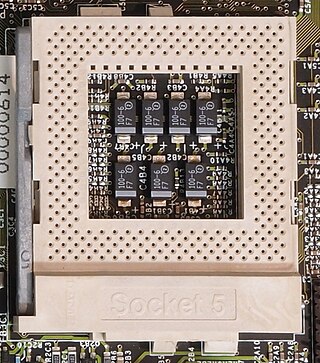Top Qs
Timeline
Chat
Perspective
Socket 5
CPU socket From Wikipedia, the free encyclopedia
Remove ads
Socket 5 was created for the second generation of Intel P5 Pentium processors operating at speeds from 75 to 133 MHz[1][2] as well as some Pentium OverDrive and early Pentium MMX processors with core voltage 3.3 V. Released in March 1994, it superseded the earlier Socket 4.[3] Consisting of 320 pins, this was the first socket to use a staggered pin grid array (SPGA), which allowed the chip's pins to be spaced closer together than earlier sockets. Socket 5 was replaced by Socket 7 in 1995.[4]
Remove ads
See also
References
External links
Wikiwand - on
Seamless Wikipedia browsing. On steroids.
Remove ads

